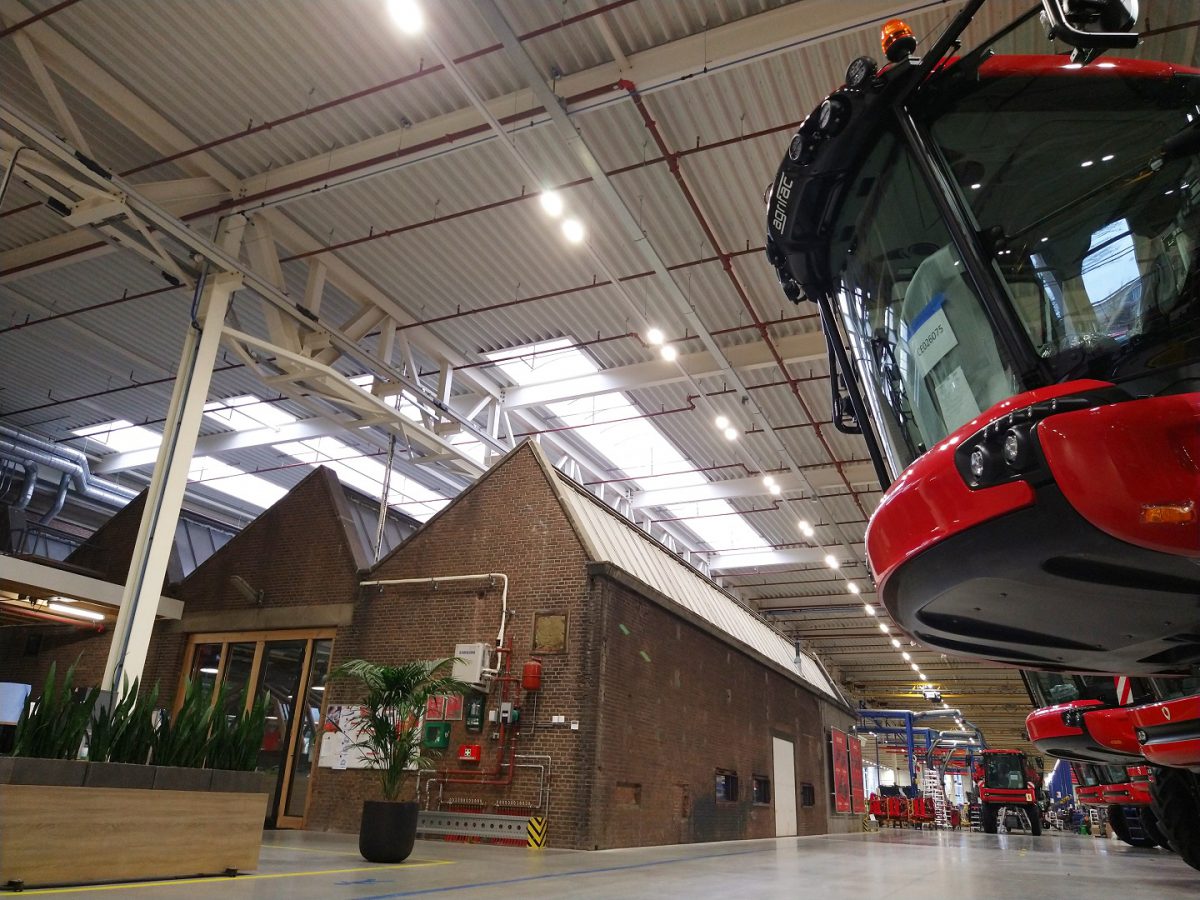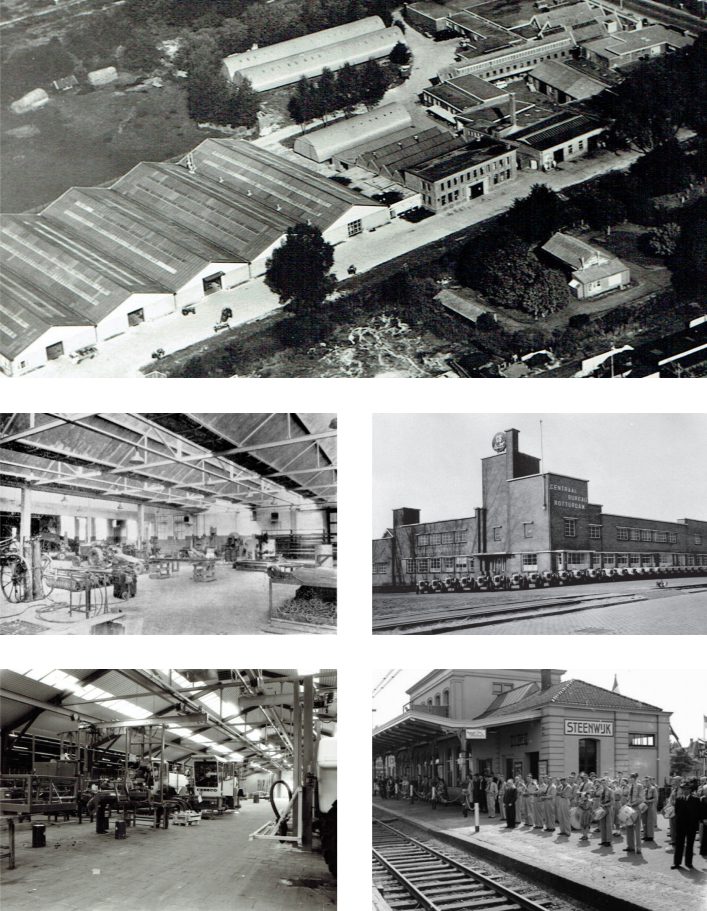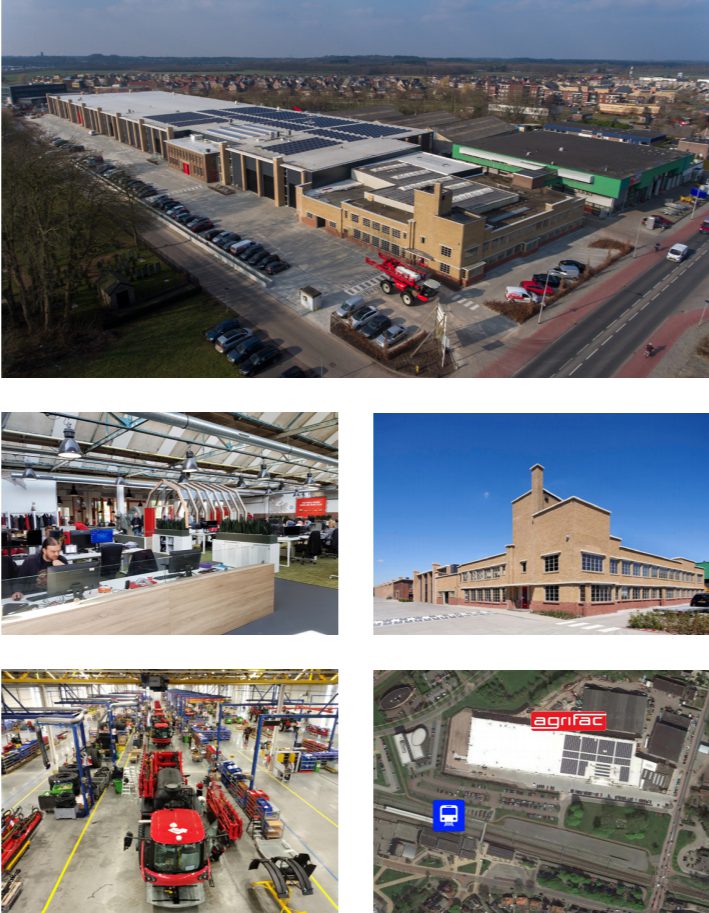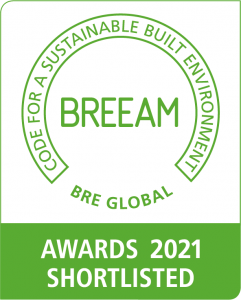Agrifac remodel goes above and beyond its BREEAM Outstanding rating
Overview
Agrifac Machinery manufactures farming equipment at its factory in the Netherlands. The company rebuilt its offices and factory buildings to accommodate a new production line process. During this rebuilding phase, the client took every measure to make the building as sustainable as possible, going above and beyond the requirements of the BREEAM certification.
About
Agrifac develops and produces innovative and sustainable self-propelled sprayers and beet harvesters. It is active in the UK, Australia, Canada and all over Europe. All Agrifac machines are designed and built at the Agrifac factory in Steenwijk, the Netherlands.
Background
Agrifac makes machinery which will give a higher yield while using less water and less chemicals. For the next steps in this development, it needed a place where it could produce these machines for the next step in its production process.
Agrifac offers an unique location; it’s one of the only industrial complexs in the world that is so close to a railway station, a city centre (both within walking distance) and close to the motorway. These factors reduce CO2 associated transport and travelling.
Sustainability in its DNA
Agrifac makes a global impact with its agricultural machines, which need less water and chemicals. Its machines already deliver this promise across the world
Sustainability is in Agrifac’s DNA. Saving water is not only important for the machines, but also for its production site. The new factory and rebuild has made the company’s DNA and claim for sustainable farming even stronger.
Higher yield for farmers
Yield can be increased on less productive farmland where there are huge yield gaps between current production levels and those possible with improved production practices, mechanisation, precision farming and farming on plant level, so called NEED Farming.
Agrifac sprayers are able to achieve more yield with less crop protection, to provide each plant what it needs, helping farmers all over the globe feed the world in a more sustainable manner.

Challenges
The factory and offices of Agrifac are on the same site in Steenwijk in the Netherlands as they have been since 1938. As part of this project, they were extensively rebuilt and remodelled.
Remodelling the offices
The remodelling of the offices was done in two phases. The first phase involved the adaptation and expansion of the original office space. During the second phase, the empty offices on the Eesveenseweg were remodelled into usable office spaces.
A new factory hall
The old factory was very outdated and therefore no longer suitable for current business operations as the producer of the worlds most innovative and sustainable crop sprayers.
It was completely demolished and rebuilt in phases. This was necessary for the new production process, which the factory has implemented. The production line was rotated a quarter of a turn in order to be able to produce more efficiently.

Solutions
The most innovative and sustainable machines in the world are now being developed and assembled in the most sustainable factory in the Netherlands.
Management (Score: 87.5%)
In consultation with all parties, being Agrifac Machinery, B+O Architects, W4Y, VolkerWessels Rottinghuis, VDK Heluto and Bakker TIB, almost all BREEAM credits have been obtained. For this, a Life Cycle Analysis was carried out, consultations took place with all surrounding stakeholders and usage of maintenance-friendly materials and solutions catalysed the creation of a very safe building. However, because the choice during construction was made to have an open appearance, an equivalent high safety score couldn’t be achieved due to the lack of a defined perimeter.
Health (Score: 84.95%)
Various office and factory spaces were relocated so that every area is connected to daylight, and almost every room has a outside view.
The whole building is now equipped with daylight controlled LED lighting. One switch has been realised per 40m2 and these industry requirements are higher than BREEAM requirements. Everywhere there is more fresh air than required and no VOC emissions. There is a perfect climate, even in the factory building with high heat production. The temperature in the offices can be adjusted per 40m2.
Energy (score: 100%)
The building and production process are energy neutral. Annually the 634 kWp solar panels are generating more power than the building and process are using. There is now a complete facility measurement system where each flow group is measured. In terms of W, all heat and coldness is measured per floor. There are no thermal defects and the air-tightness is twice as good as the requirement for a new-build house.
Transport (score: 91.7%)
The building is perfectly located in terms of public transport accessibility, connecting foot and cycle paths, available parking spaces, manoeuvrability and real-time information provision in the building concerning public transport, bicycle plan and carpooling.
Water (score: 100%)
All possible water reuse measures were taken. The water collection tanks with 50,000 litres are the biggest eye-catchers here, but all vegetation can grow without irrigation.
Materials (score: 68.92%)
No less than 98.6% of all materials used are certified.
Because in the Netherlands the solar panels score very badly in the Environmental Performance Calculation, the involved score drops to 3 points. Without the solar panel calculation results, the score for the materials chapter would be 100%. The building is designed in such a way that little damage can occur to the building.
Waste (score: 100%)
For renovating and rebuilding most of the material was actually upcycled (cradle to cradle), a small part was recycled. The construction of the building was circular and energy neutral.
All credits have been obtained. More than 80% of the waste is sorted, disposed of responsibly and reused. The rubble granulate that has been used fully consist of recycled material.
Ecology (score: 81.82%)
The property was built on a site where the old factory used to be. This has been remediated and rebuilt by Agrifac Machinery. Thanks to all the measures, this area now even is suitable for accommodation of protected animal species.
Pollution (score: 75%)
All rainwater that falls on the site is now infiltrated in ditches next to the buildings. Oil and gas separators are situated everywhere and the heat pumps are equipped with leak detection. There is no light and noise pollution. Finally, a propane-cooled cooling / freezing installation has been chosen which is much more energy efficient and environmentally friendly compared with any other installation.
Innovation Points (score: 100%)
The maximum number of innovation points was achieved.
Construction is now better managed and energy neutral. The building has more daylight. The current production is energy neutral as well (gas-free, circular).

Benefits
BREEAM is the sustainability standard in the Netherlands. Agrifac’s main goal continues to be a business-wide focus on sustainability, and BREEAM has heavily influenced the project from start to finish.
Architectural design with natural daylightFor this project W4Y carried out the BREEAM commissioning in conjunction with the BREEAM expert. B+O Architects created, as much as possible in line with BREEAM standards, the architectural design. All the areas where people are working longer than 30 minutes have direct connection with daylight. It applies for both offices and the factory building. Therefore W4Y has adapted the original design of the lighting by introducing daylight controls, partly in combination with presence detection. This solution also reduces the total energy consumption. Circular construction processThe location of the site is the same since 1938 construction of the building was circular and as much as possible renovated. This helped retail the cultural and historical value of the site. Energy neutral and low water usageThe building is completely energy neutral; the 5.000m2 solar panels are generating more energy than Agrifac uses. All Agrifac sprayers are tested with water from the rainwater collection tank (50m3) and it is used for flushing toilets. Heating and cooling of the building is done via heat pumps and score a TER (total energy recovery) of 6. Healthy ventilation and airtightnessThe air ventilation per person is higher than required, making it a healthy work place. This is more than welcome, especially since the COVID pandemic. Another remarkable point is the airtightness, even more so considering the many loading and unloading points. The realised airtightness is a qv;10 value of 0.24. Cultural and historical valueAlso importantly, the cultural-historical value is retained. The location is the same since 1938. The old buildings are remodelled and made energy neutral while keeping the historical ambiance. The existing façades of the office area had a cultural and historical value and were therefore retained. The façade of the new factory hall is in line with this. There is also a positive impact on the community of Steenwijk, which is really proud of Agrifac Machinery B.V. Lessons learntFrans Apeldoorn, Director Operations (COO) at Agrifac Machinery B.V. gives his advice to other companies undergoing the BREEAM certification process: “Do work with experienced consultants and rely on their expertise. At a very early stage, have conversations with neighbours, municipality, users and other stakeholder and keep them closely and regularly informed during the whole project. Aim to score maximum or even beyond maximum BREEAM credits really making clear the sustainable ambition. Continuously be open to new innovative technologies in order to achieve even better and more sustainable results. Provide and secure a well-defined assignment at the start of a project so avoiding any discussion afterwards.” |
Bl |

